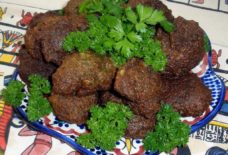Finding the Perfect Soak in Marrakech
SOURCE: NATIONAL GEOGRAPHIC
BY: STARLIGHT WILLIAMS
For travelers in Morocco, nothing is more revitalizing than a steam and scrub at a hammam. This venerated tradition is based on Roman bathing practices, which were adopted along the Mediterranean coast in the seventh century A.D. during the Arab conquest. Without public plumbing in most homes, hammams soon became gathering places for purification before prayer and for catching up on the latest gossip.
Spiritual, social, and somewhat indulgent, hammam rituals have endured for centuries—and for good reason. In Moroccan culture, “no place can make you so clean as a hammam, even if you [were to] take three showers a day,” says Mohammed Salmi, a local tour guide. Here’s our guide for finding the perfect soak.
Hammam basics
Hammams typically include three steam rooms of increasing temperatures and are separated (or scheduled) by gender. The structure is heated by a fire tender who stokes flames below the building to keep the floors warm and the water hot. (Read more about Budapest’s bubbling bath culture.)
Whether the structure is a humble, public bath or a soaring, private bathing palace, the ritual is roughly the same: Bathers begin in the hottest steam room to open pores and unwind. Then, they are doused in warm water, washed with Moroccan black soap—a greenish-black gel made from olive oil and macerated olives—and exfoliated with a kessa (coarse scrubbing glove) to remove the dead skin. A quick splash in cool waters reawakens the body, and a muscle-melting massage with argan oil works out the knots.
Spa wisdom
Check your inhibitions at the door before entering a local hammam, Salmi advises. “A Westerner may be surprised by the intimate relations between people, especially in popular places,” he says. “One [may] ask another to do the scrubbing, for example.”
At public hammams, bathers bring their own kits, which include a scrubbing glove, soap, brush, razor, shampoo, towel, sandals, and a clean change of clothes. Most public hammams provide mats and buckets; attendants can be hired for scrubbing and massaging duties. At private hammams, additional services may be offered, such as hot stone therapy, acupuncture, or a pumice stone foot scrub. Attendants offer mint tea before the steam room and cool glasses of water or herbal beverages before exfoliation. After the experience, it’s time to head to the restorative room to rehydrate, enjoy sweet pastries, and embrace your newfound serenity.
If you’re looking for an elevated, full-body bliss, Marrakech has plenty of pleasure-inducing oases to explore. Pro tip: Use the word “bshwiya” to ask your bathing assistant for a gentler scrub. (Discover Marrakech’s hidden treasures.
Where to relax
Hammam Dar el-Bacha
A short walk from the Jamaa El Fna, this public hammam is the largest traditional bathhouses in Marrakech. For a truly immersive experience, bring your own supplies and complete the hammam rituals yourself. Price: 10 dirham (one dollar). Good to know: Leave your credit card behind because this hammam is cash only.
Hammam Mouassine
Located in the heart of the medina, Marrakech’s oldest public bathhouse offers a refreshing treatment in which an attendant applies a purifying rhassoul mud wrap. Price: 10–250 dirham ($1–26). Good to know: There are separate entrances for men and women to the east and west of the building, respectively.
Les Bains de Marrakech
This private hammam offers double massage rooms and duo baths, making it perfect for couples looking to relax together. Price: 220–450 dirham ($23–47). Good to know: This is a popular spa in the medina, so book ahead.
La Mamounia
Its turquoise pool and Arab-Andalusian and Berber-inspired architecture make this spa one of the most Instagrammed locations in Marrakech. Price: 1200–2000 dirham ($125–209). Good to know: Dress to impress—after your treatment you’ll want to linger in the hotel’s fabulous lobby.








